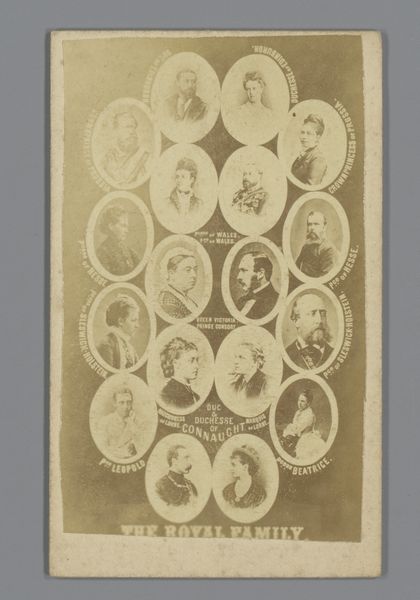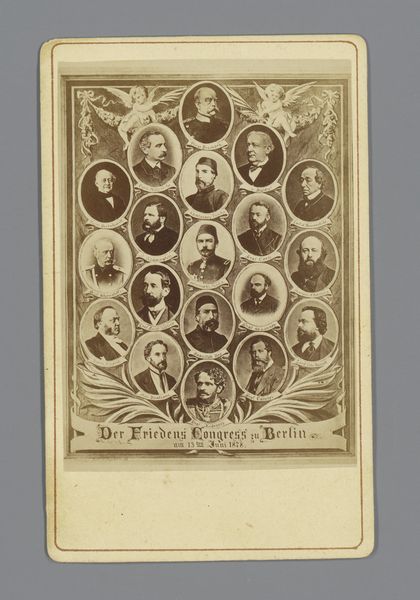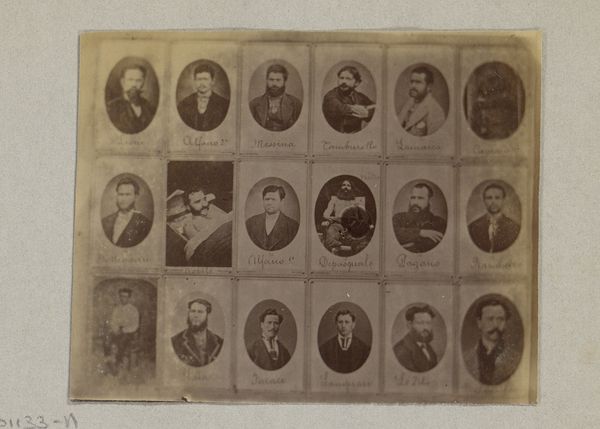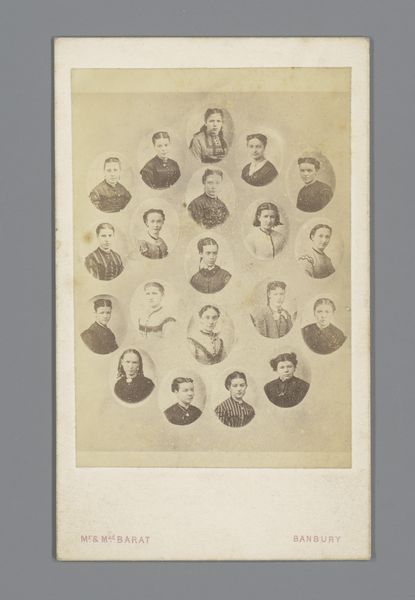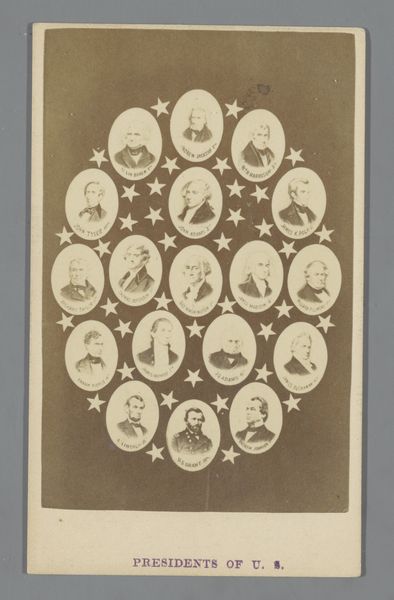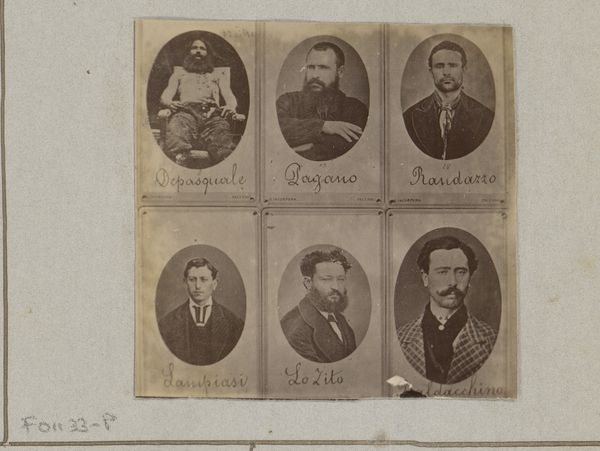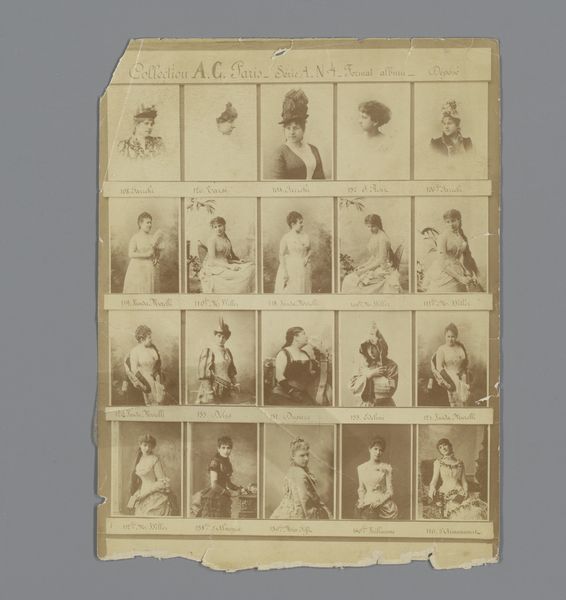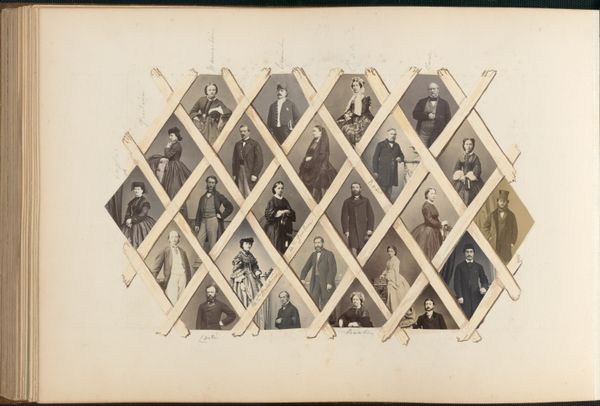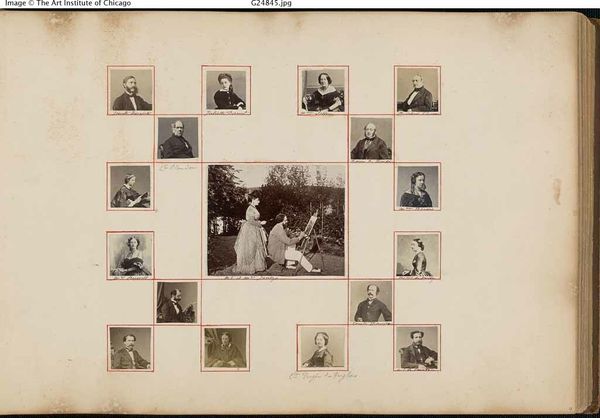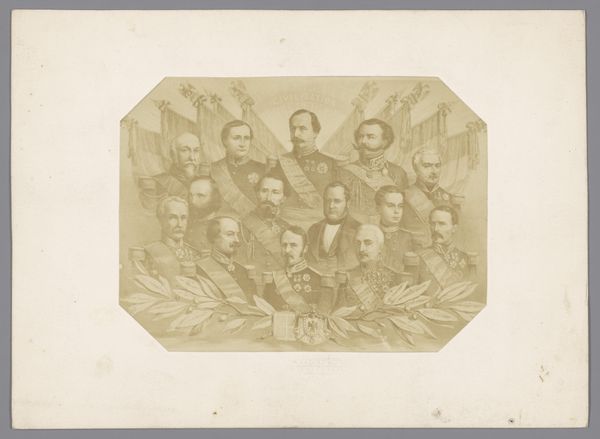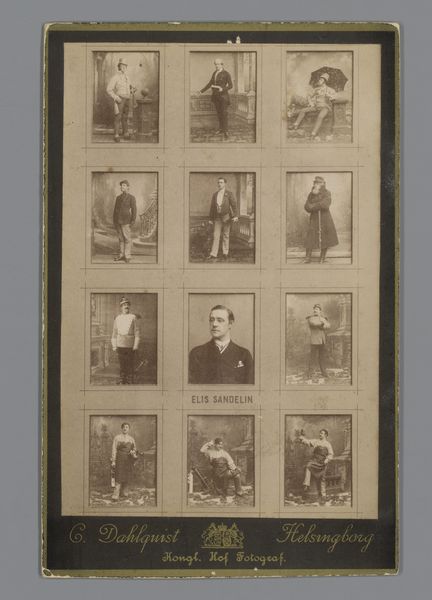
Elektrische stoel en portretten van 23 daarop geëxecuteerde misdadigers, Ohio c. 1905
0:00
0:00
photography, gelatin-silver-print
#
portrait
#
photography
#
gelatin-silver-print
#
genre-painting
#
history-painting
#
academic-art
Dimensions: height 157 mm, width 101 mm
Copyright: Rijks Museum: Open Domain
Editor: This photograph, taken around 1905 at the Ohio Penitentiary, shows an electric chair next to twenty-three portraits. What strikes me is the unsettling combination of institutional authority and human vulnerability presented in this collage-like image. What is your take on this, seeing it through a historical lens? Curator: It’s unsettling for a reason. The late 19th and early 20th centuries witnessed a surge in scientific and pseudoscientific attempts to categorize and control the criminal body. This photograph is not just a record of executions; it’s a cultural artifact, reflecting anxieties about crime, race, and the expanding power of the state. Editor: So it’s a way for the prison to mark its power through photography? Curator: Precisely. Think about the phrase "Photos made from life", boldly stated at the bottom of the photo and its commercial context as a souvenir. It turns state-sanctioned death into a commodity, subtly reinforcing the idea that the lives of these executed individuals were disposable. What kind of dialogue do you think the institution tries to foster through this photographic composite? Editor: That's really disturbing, now that I consider that it was priced at only 25 cents. It makes me wonder who exactly purchased such memorabilia? This image clearly represents an exploitative power dynamic at work within the prison institution, normalizing a grim form of historical accounting and dehumanization. It shows an interesting power dynamic between viewer, object and prison. Curator: Exactly. And isn't it interesting to reflect on the act of witnessing these men in photography as compared to witnessing the live executions themselves? The proliferation of images like this had real political consequences, as well as offering valuable research material into crime and punishment. Editor: Thank you for these reflections; it’s changed the way I understand photography’s power to shape social perceptions of the law and criminality.
Comments
No comments
Be the first to comment and join the conversation on the ultimate creative platform.
